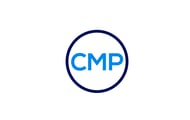This document is designed to share best practices with student teams to ready them to undertake Beneficiary Discovery with confidence and efficacy.
Beneficiary Discovery is arguably the most important (and certainly the most time consuming part) of Hacking for Defense ®. The Beneficiary Discovery process is the meat of what H4D ® does, as it allows teams to validate their Problem, test their hypotheses, and develop their Minimum Viable Products (MVPs). Thus, it is important that students effectively identify beneficiaries, engage with them, and conduct fruitful interviews.
1. Find Mutual Connections to Facilitate Introductions.
People are busy. Unless they have a reason to speak with you or a relationship with you, it will be hard to get in touch. Having a relationship with or mutual acquaintance to facilitate an introduction between you and the beneficiary significantly increases the likelihood they will respond and engage promptly.
2. Maintain Continuous Contact.
Build a relationship with beneficiaries throughout the course of your discovery. Keep them abreast of your team’s developments and breakthroughs. Continued engagement with your beneficiaries may increase their support.
3. Center Yourself and Your Team Around the Problem Statement at the Start of Every Interview.
Ensure you clearly articulate your problem statement and how that person relates to it at the outset of your interview to help it be the most fruitful. This will allow the beneficiary to correct you if your understanding of how they relate to the problem is erroneous or unspecific. Understanding how a person relates to the problem is paramount to asking the best questions in an interview that will help you learn the most in the shortest amount of time.
Internal context setting touch points are also important to having a productive interview. Listing the context of the meeting, who passed you the contact, how the beneficiary likely relates to the problem, and what your goals are out of the meeting (hypotheses and assumptions you would like to test or verify) are all helpful things to highlight immediately prior to every interview in order to make sure you and your colleagues have the common understanding to make the interview as informative as possible. Front load specific asks if you have them.
4. Create Compelling Hooks.
Learn which titles, relationships, and verbiage are significant to your target audience and use them during reach out. Utilize your organization’s trusted name recognition, problem solving intent or history, or unique value proposition. Every problem and set of beneficiaries is different, but do what you can to learn about your audience and what they respond to to create compelling hooks and to induce productive engagement.
5. Link People to the Problem.
It’s important to begin a beneficiary discovery search with an understanding of where people lie in relation to the problem and workflow and the organization. One helpful method of doing this is through stakeholder mapping.
 The stakeholder map is developed by asking questions that target each stakeholder group to make sure you have a well-rounded pool of beneficiaries that lead to a well-rounded understanding of your problem as early as possible. Gaining a 360 view of your problem early allows your team to conduct more focused tests and MVPs earlier and prevents unnecessary late-stage pivots.
The stakeholder map is developed by asking questions that target each stakeholder group to make sure you have a well-rounded pool of beneficiaries that lead to a well-rounded understanding of your problem as early as possible. Gaining a 360 view of your problem early allows your team to conduct more focused tests and MVPs earlier and prevents unnecessary late-stage pivots.
Make sure to focus on detractors in this line of questioning, as human behavior often causes us to be most inclined to talk to allies and those we anticipate will agree with us and avoid those who may disagree or stand in the way of a potential solution. If these saboteurs can constitute a legitimate obstacle to solution implementation down the road, it is paramount to understand their viewpoint from the beginning to try to come up with feasible solutions faster. Interviewing people who have a diversity of opinion, experience, and background is more helpful than having 20 people with the same training and perspective.
6. Schedule Early.
Identifying a well-rounded and diverse set of beneficiaries at the start through stakeholder mapping allows you to set up meetings with those people further in advance. As soon as you identify a beneficiary you would like to interview, try to get on their calendar, even if that means scheduling several weeks in advance and anticipating a beneficiary that may be helpful at that point.
This article is available for download here.
This work is licensed under a Creative Commons Attribution-Non Commercial-No Derivatives 4.0 International License. Licensees may copy, distribute, display, and perform the work and make derivative works and remixes based on it only for non-commercial purposes. This work was originally authored by Steve Blank, Pete Newell, and Joe Felter. Copyrights in this work are jointly owned by The Common Mission Project and BMNT, Inc.
For permission requests, e-mail contact@commonmission.us or write to:
Common Mission Project
410 Sherman Ave.
Palo Alto, CA 64109
